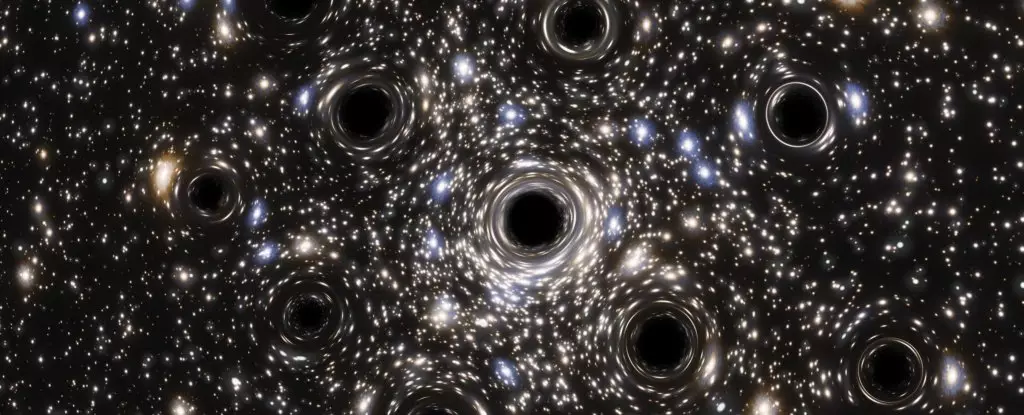In our expansive universe, globular clusters serve as intriguing windows into the past, representing dense collections of ancient stars. One such cluster, Palomar 5, has become a focal point of astronomical investigation, particularly due to the remarkable insights it may offer regarding the presence of stellar-mass black holes. Located about 80,000 light-years away from Earth, Palomar 5 is not just a dense ball of stars; it is also a cosmic puzzle, inviting scientists to delve deeper into the origins and fates of these vibrant celestial entities.
Globular clusters like Palomar 5 are often referred to as ‘fossils’ of the early universe, showcasing a multitude of stars formed from the same primordial gas cloud. Typically, these clusters are home to between 100,000 and 1 million aging stars, many of which are nearly as old as the universe itself. The Milky Way hosts over 150 of these clusters, each contributing to our understanding of cosmic history and the nature of dark matter. Contrary to their stability, these clusters may start revealing their fragility through the emergence of tidal streams—elongated arcs of stars that branch out from the clusters as they are disrupted by gravitational forces.
Previously, identifying tidal streams was challenging due to observational limitations. However, with advanced tools like the Gaia space observatory, which provides high-precision three-dimensional mapping of the Milky Way, many such streams have been cataloged. These streams, while enigmatic, are believed to be produced through the tidal disruption of star clusters, though the exact mechanisms remain an open question. Researchers like Mark Gieles from the University of Barcelona emphasize that further exploration into clusters associated with tidal streams is essential.
Palomar 5 stands out due to its extensive and loosely arranged distribution of stars, as well as its long tidal stream that spans an impressive distance of over 20 degrees in the night sky. This unique configuration has drawn significant interest from researchers hoping to decode the processes that lead to the formation and evolution of tidal streams. Notably, Palomar 5 provides an exemplary case, being the only known instance where a tidal stream has a companion cluster, which offers a rare opportunity to study the dynamical interactions involved.
Utilizing intricate N-body simulations, Gieles and his team sought to recreate the complex orbits of Palomar 5’s stars, aiming to understand how these celestial bodies reached their current positions. Their efforts extended to simulating the gravitational interactions that can occur with populations of black holes, a component previously overlooked in similar studies.
The inclusion of black holes within the equations of Palomar 5’s dynamics unveiled startling results. The simulations revealed that a considerable population of stellar-mass black holes could indeed shape the current structure of the cluster. The gravitational slingshot effect induced by these black holes may account for the stars that have ventured into the tidal stream. Notably, this work has suggested that there could be three times more black holes present in Palomar 5 than current models anticipated, comprising over 20% of the cluster’s total mass, each with a gravitational pull roughly twenty times that of our Sun.
This significant presence of black holes raises additional questions about the fate of Palomar 5. According to the simulations, it is predicted that in about one billion years, the cluster will dissolve entirely, leaving behind only black holes in orbit around the galactic center. This suggests that Palomar 5, rather than being a singular case, might exemplify a broader trend whereby other globular clusters face a similarly unfortunate fate.
The notion that many globular clusters could eventually dissolve into stellar streams underlines the importance of continued exploration of these cosmic entities. Furthermore, Palomar 5 might emerge as a fertile ground for the discovery of black hole mergers and could potentially yield insights into the elusive category of middleweight black holes. As astrophysicists like Fabio Antonini note, binary black hole mergers are believed to form in such stellar environments, yet the mystery surrounding the true number of black holes within these clusters persists.
Palomar 5 serves as an extraordinary case study revealing both the hidden treasures and intricate challenges associated with stellar-mass black holes in globular clusters. This investigation not only enhances our understanding of the life cycles of star clusters but also suggests exciting prospects for discovering the enigmatic black holes lurking in their cores. As we advance our observational techniques and simulations, the cosmos continues to unfold its secrets, beckoning us to explore deeper into the cosmos and its myriad mysteries.


Leave a Reply